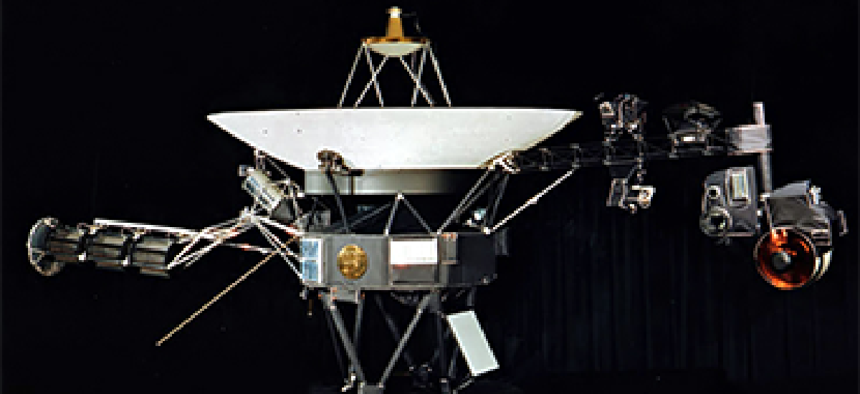Voyager mission a long-lasting IT success

After more than 30 years, Voyager 1 has left the solar system, still transmitting useful data thanks to long-ago prescient IT choices.

After more than 30 years, Voyager 1 has left the solar system, still transmitting useful data thanks to long-ago prescient IT choices.
Voyager 1 recently became the first manmade object to leave the solar system, and after 36 years of spaceflight, it's still producing relevant scientific data as it speeds away from Earth at 38,000 miles per hour.
It has literally gone where no manmade craft has gone before, and its longevity is in part due to innovative IT decisions made by NASA engineers in the months leading up to its 1977 launch, according to Lee Holcomb, now Lockheed Martin's vice president of strategic initiatives.
Nearly four decades ago, Holcomb worked as an engineer on the hugely successful NASA program that launched the Voyager 1 and 2 spacecraft.
Collectively, the Voyager 1 and 2 spacecraft visited and helped map the solar system's outer planets, and Voyager 1 has continued improving scientists' understanding of the solar system through data it still transmits on plasma density, solar wind speed and magnetic fields.
In three years of development at the NASA Jet Propulsion Laboratory (JPL), the Voyager spacecraft benefited from every engineering advancement made by previous spacecraft, Holcomb said.
It is powered by a radioisotope thermoelectric generator that will keep the craft powered until around 2025, and its integrated propulsion system drastically increased its potential lifecycle. But Holcomb said one of the keys to Voyager 1's success can be traced back to IT.
Once installed and launched, Voyager 1's onboard computer would always and forever have 69 kilobytes of memory, yet NASA's ability to communicate would change over time. The craft's systems were designed with upgrades to communications and compression technologies in mind, even though such algorithms and methods didn't exist yet.
"From an IT perspective, we were dealing with antiquated computers compared to today," Holcomb said. "We enabled the communications and computer system to allow us to upload new algorithms for compression and communications. After the spacecraft launched, in the 1980s and 1990s, we were able to upload to the spacecraft more modern algorithms for compression and enabled the communications link to work at these very extreme distances with feeble, low-power communications systems."
Those advances allowed the Voyager program to be as long-lasting and successful as it has been, Holcomb said, and it drives home the importance of integration and innovation in federal IT some 40 years after the project began.
The federal government shells out about $80 billion per year on information technology, although the sequester has squeezed recent budgets. But affordability isn't a new concern, Holcomb said. NASA had canceled a similar spacecraft program prior to Voyager because of its expense.
"Many agencies are surviving on lower budgets," said Holcomb, who now researches how transformational technologies such as cloud computing, big data, mobility and cybersecurity can change business practices in the public and private sectors.
The same principles that applied to Voyager in the days of disco and Led Zeppelin still apply to federal IT. Not every IT project is built to last decades or even several years, but principles of innovation, integration and cost-effectiveness should always be expressly considered for any project, he said.
"Voyager gets a lot of credit for the wonderful science it has produced, and we put these spacecraft up there to get science, but I think it is time to say there was super engineering done on that spacecraft," Holcomb said. "For it to be resurrected on affordability, that's what we're dealing with in government systems today – to integrate and innovate and drive systems' costs down."
Four decades after it was built, the $250 million Voyager 1 is still in communication with Earth, and still doing science, far past its life expectancy of five to 10 years. The best IT projects stand the test of time, Holcomb said.
After his time as an engineer, Holcomb would eventually climb the ranks at NASA to become its CIO in the late 1990s before taking on the challenge of overseeing the merger of 22 federal agencies into the Department of Homeland Security as its first CTO. There were major IT challenges inherent in those positions, as well as at Lockheed Martin, where he's helped the Environmental Protection Agency and other federal customers jump to cloud computing. But Holcomb's passion for IT shines brightest when he reminisces about his Voyager days.
It is "one of my proudest involvements in the field of engineering," Holcomb said.






